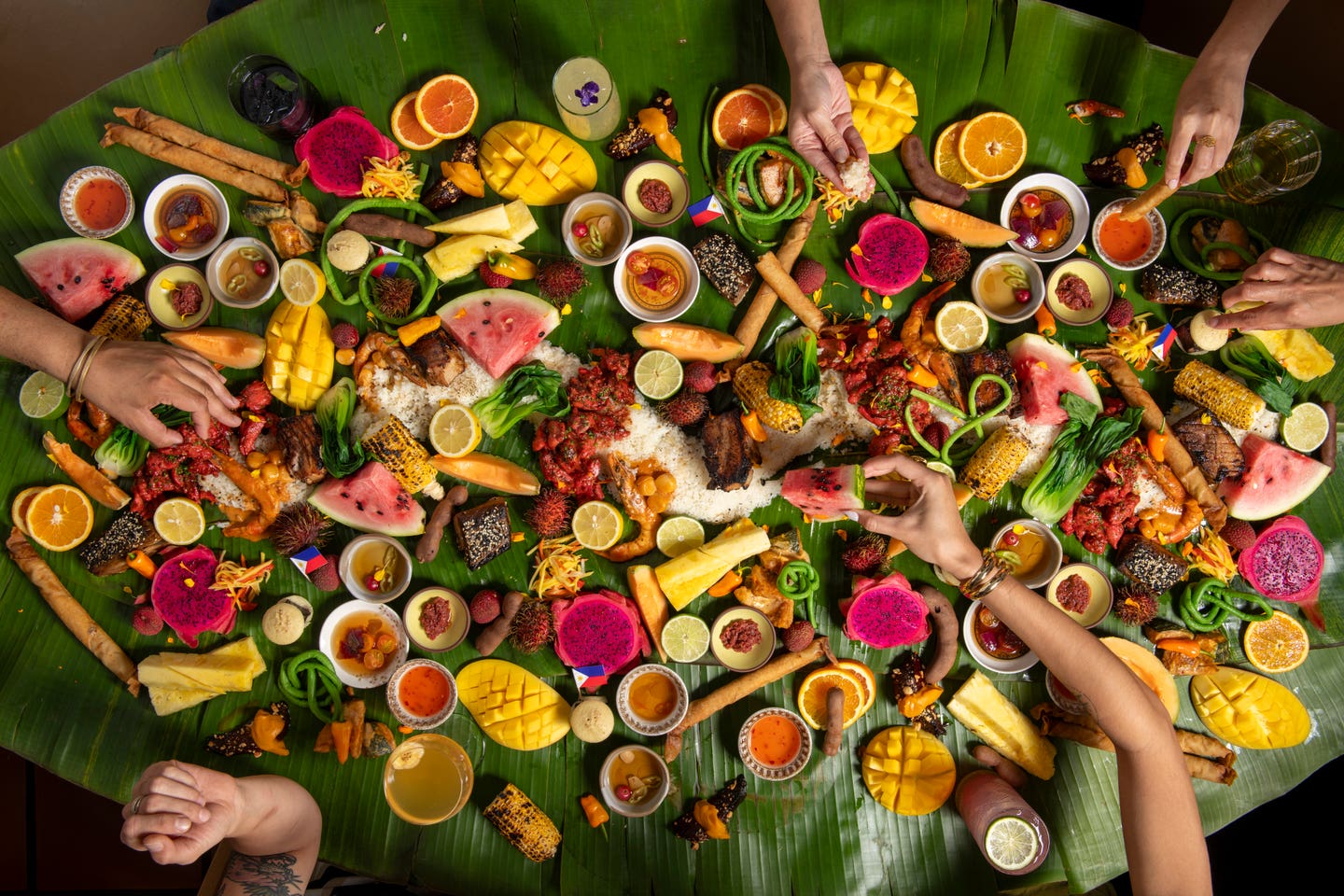
Make Your Next Dinner Party a Kamayan
Because there’s nothing more satisfying than this utensil-free Filipino feast.
There’s the sight of the colorful spread. The sounds of laughing friends and the crunch of crispy lechón skin. The smell of garlic wafting above the sinangag. And the complex, contrasting tastes and textures dancing on your tongue. Welcome to kamayan, the Filipino feast that stimulates the senses—especially the carnal, intuitive one many Western meals overlook: touch.
Kamayan (from kamay, “hand,” in Filipino) refers to the pre-colonial tradition of eating without cutlery. Sixteenth-century Italian scholar and explorer Antonio Pigafetta, who documented Philippine history during the Magellan expedition, noted that natives used wooden spoons for serving and cooking—but not for eating.
Nowadays, kamayan is synonymous with a communal feast of rice, grilled or roasted meats, seafood, and fruit, all laid atop a banana leaf-lined table, floor, or ground. The bounty is often enjoyed on beach outings or at home on special occasions such as birthdays. Today, Filipino American chefs are bringing the tradition into their restaurants.
Chef Lordfer Lalicon, who helms 2024 James Beard Award-finalist Kaya in Orlando, Florida, likes that kamayan partakers are essentially forced to put their phones down. “You’re eating together, you’re talking together. You can do nothing but enjoy the food in front of you because you can’t touch anything else,” he laughs. “You’re enthralled.”
The feast is typically a family affair, but any strangers quickly get acquainted digging into the same pile of food. “Eating with our hands grounds us and creates a more intimate connection with the ingredients,” says Eric Valdez, executive chef and partner at Filipino restaurant Naks in New York City, which offers a kamayan tasting menu. He adds, “The taste changes ... You feel the ingredients more, and the emotion coming from the food.”
The hands-on format is sometimes intimidating for those more accustomed to eating with cutlery. But there is a method to what may seem like madness. Yana Gilbuena-Babu, chef and founder of SALO Series, a 50-week, 50-state kamayan pop-up, explains, “There’s etiquette in dining with your hands. It’s not just shoveling food into your mouth.”
Gilbuena-Babu created the SALO Series to both reclaim her culture and share Filipino cuisine with others at its most traditional and accessible. Until recently, she recalls, many in the food industry were seeking to “elevate” Filipino food. “That kind of rubbed me the wrong way,” she says. “When you say you want to elevate something, it connotes an inferiority to something else. I don’t want to elevate Filipino cuisine. I would rather celebrate it.”
While some refer to kamayan as a “boodle fight,” participants aren’t supposed to tussle for their meal. According to Gilbuena-Babu, the move is to “pick, pack, push.” You pick up some rice and the dish you want to try. Then, you pack everything into a ball using your fingers (not your palms) and push it into your mouth. Etiquette dictates that your fingers should never pass your lips. Some diners designate one hand for eating, and the other as a “serving spoon,” or to hold a plate or a drink.
Kaya co-owner and general manager Jamilyn Salonga-Bailey agrees with Gilbuena-Babu’s approach and often persuades hesitant diners to ditch utensils, which she feels take kamayan participants out of the experience they signed up for. It’s important, says Salonga-Bailey, to “release the stigma of having to eat ‘properly’ according to Western standards.”
The importance of kamayan also lies in its historic resilience. As different countries laid claim to the Philippines over the centuries, spoons and forks were introduced, and the very existence of this traditional meal was under threat. “It suffered some erasure,” says Gilbuena-Babu. “We were made to think that we were savages or uncivilized.”
Still, Filipinos preserved the practice through more than 300 years of Spanish rule, nearly 50 years of U.S. colonization, and three years of Japanese occupation. Whether diners realize it or not, kamayan is an act of anticolonial resistance. Here are some tips for channeling that spirit in your own home.
No Plates, No Problem
Instead of plates and utensils, line a clean surface with butcher paper or newspaper, then lay banana leaves on top. The leaves are available frozen or fresh at many Asian, Latin American, and African grocery stores.
The Foundation
The only non-negotiable at any Filipino feast is rice. Place steaming mounds at various intervals for easy access. Any plain rice is fine, but many Filipinos will tell you that sinangag, crispy garlic rice, is a must.
Main Characters
Consider dishes guests can grab easily, such as marinated meats, pan-fried fish, lumpia (fried spring rolls), skewers (sweet pork barbecue is always a hit), and grilled squid or prawns.
Panoply of Produce
Steamed bok choy and green beans are always a good idea, as are vegetables cooked in coconut milk. Sliced fresh fruit—mangoes, pineapple, and tomatoes, for instance—up the visual appeal.
Dip or Douse
It’s fun to serve a variety of sawsawan (dipping sauces) and other salty, acidic, and spicy accouterments (such as toyomansi). Traditional condiments include vinegars; soy sauce; fish sauce; fresh calamansi (or bottled calamansi juice); and raw chiles, onions, and garlic. Some also like to put out bottles of sweet, tangy Mang Tomas pork liver sauce and umami-packed Maggi seasoning, or more elaborate accompaniments such as atchara (pickled green papaya relish) or bagoóng (deeply funky fermented shrimp paste).
Recipes
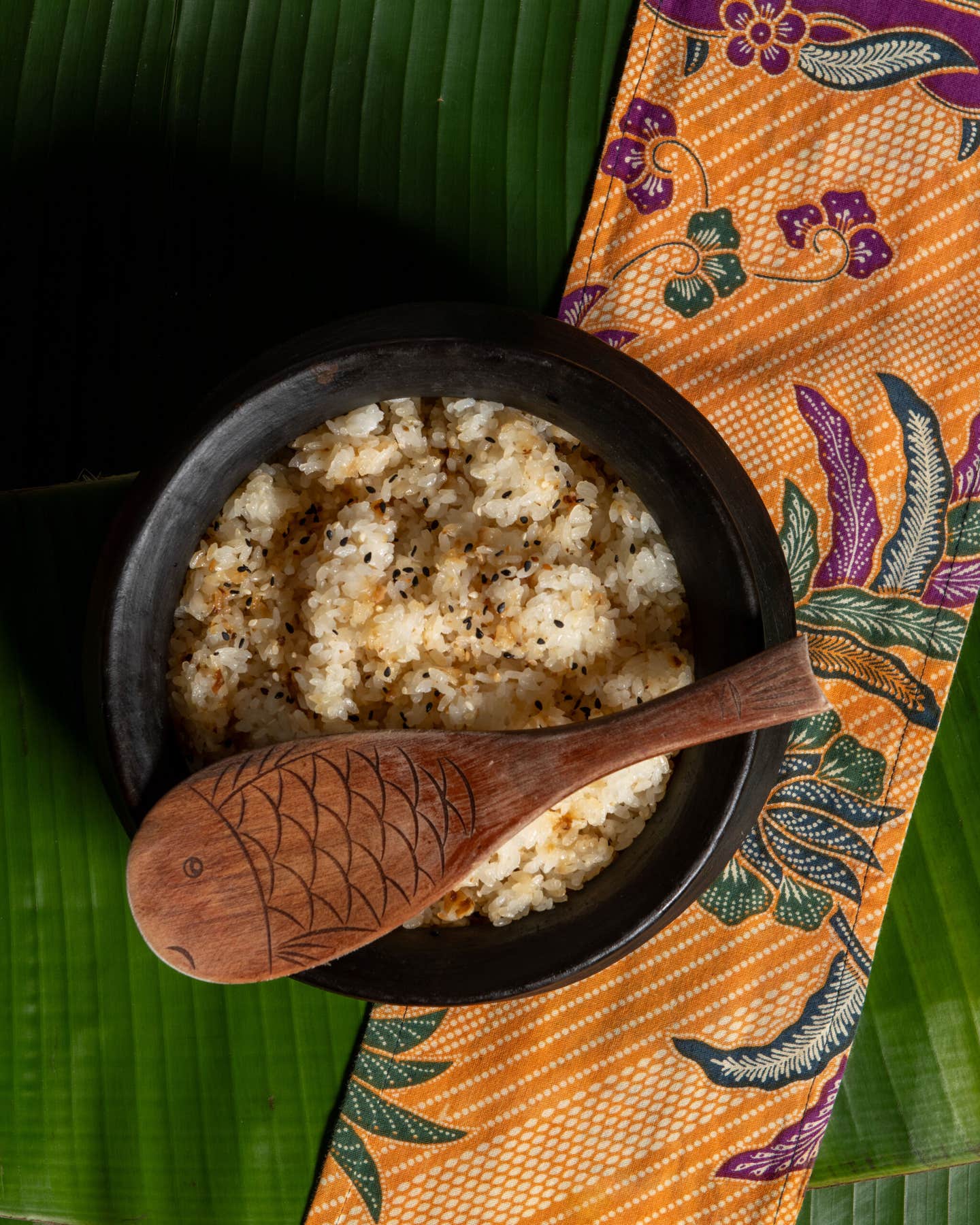
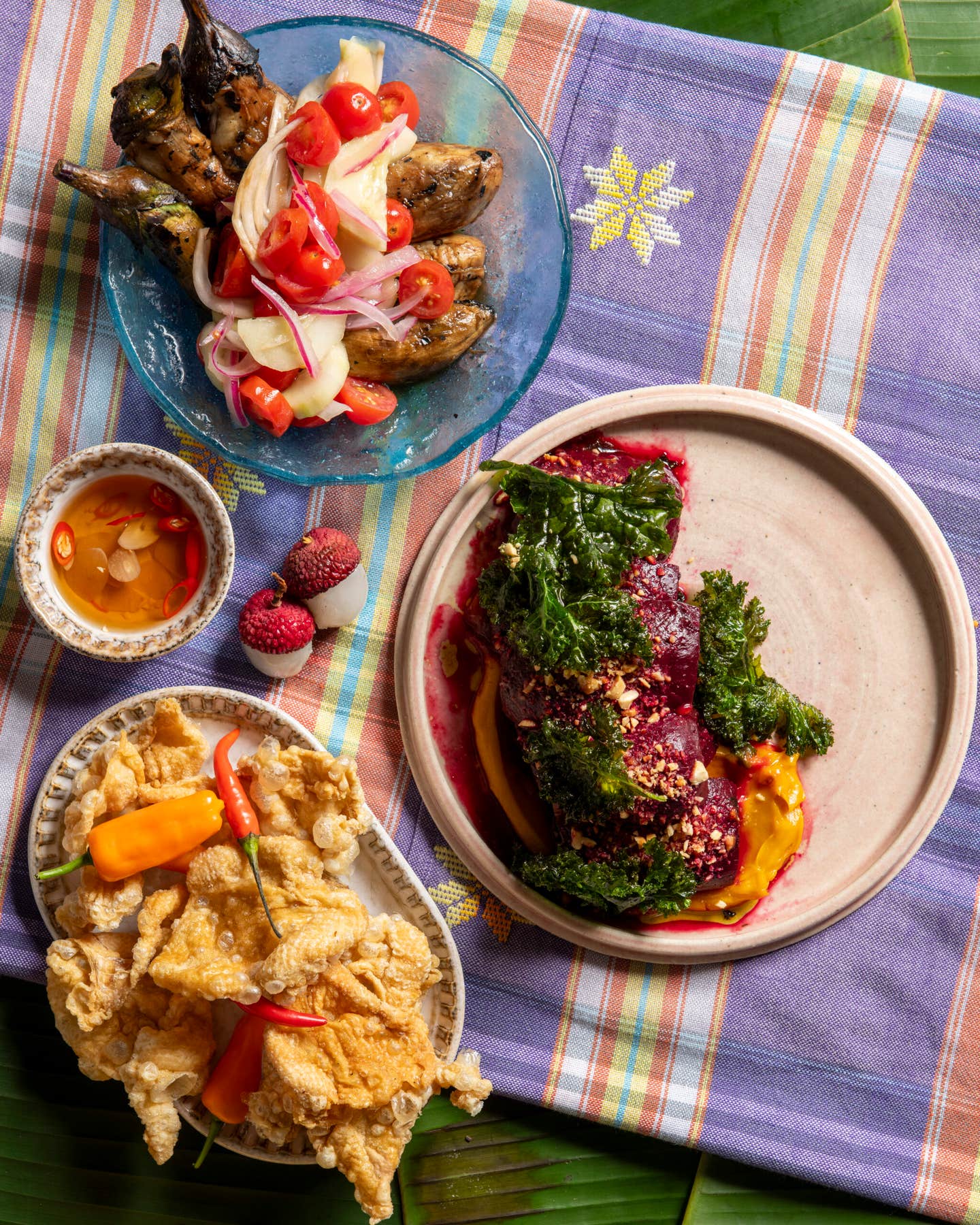
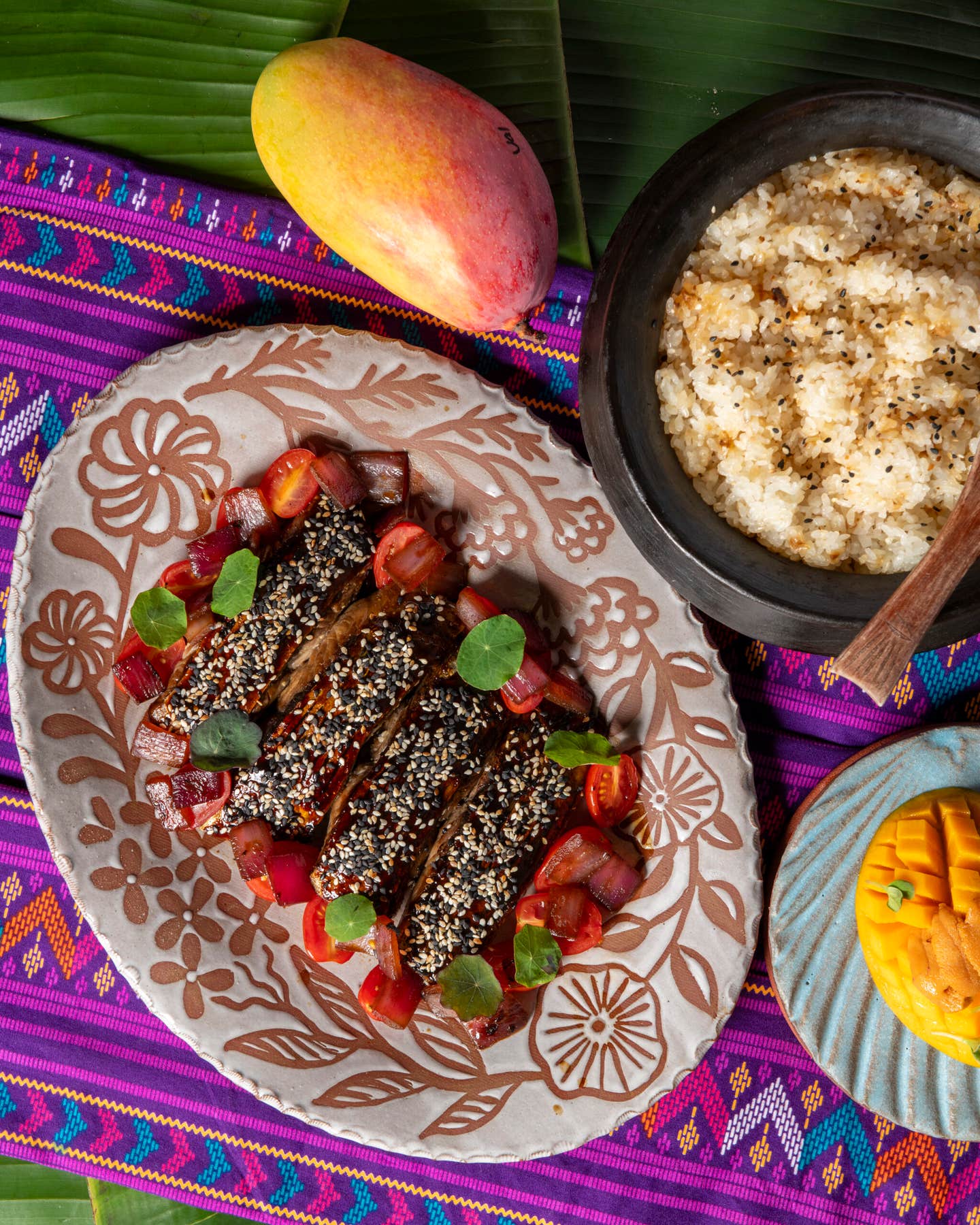
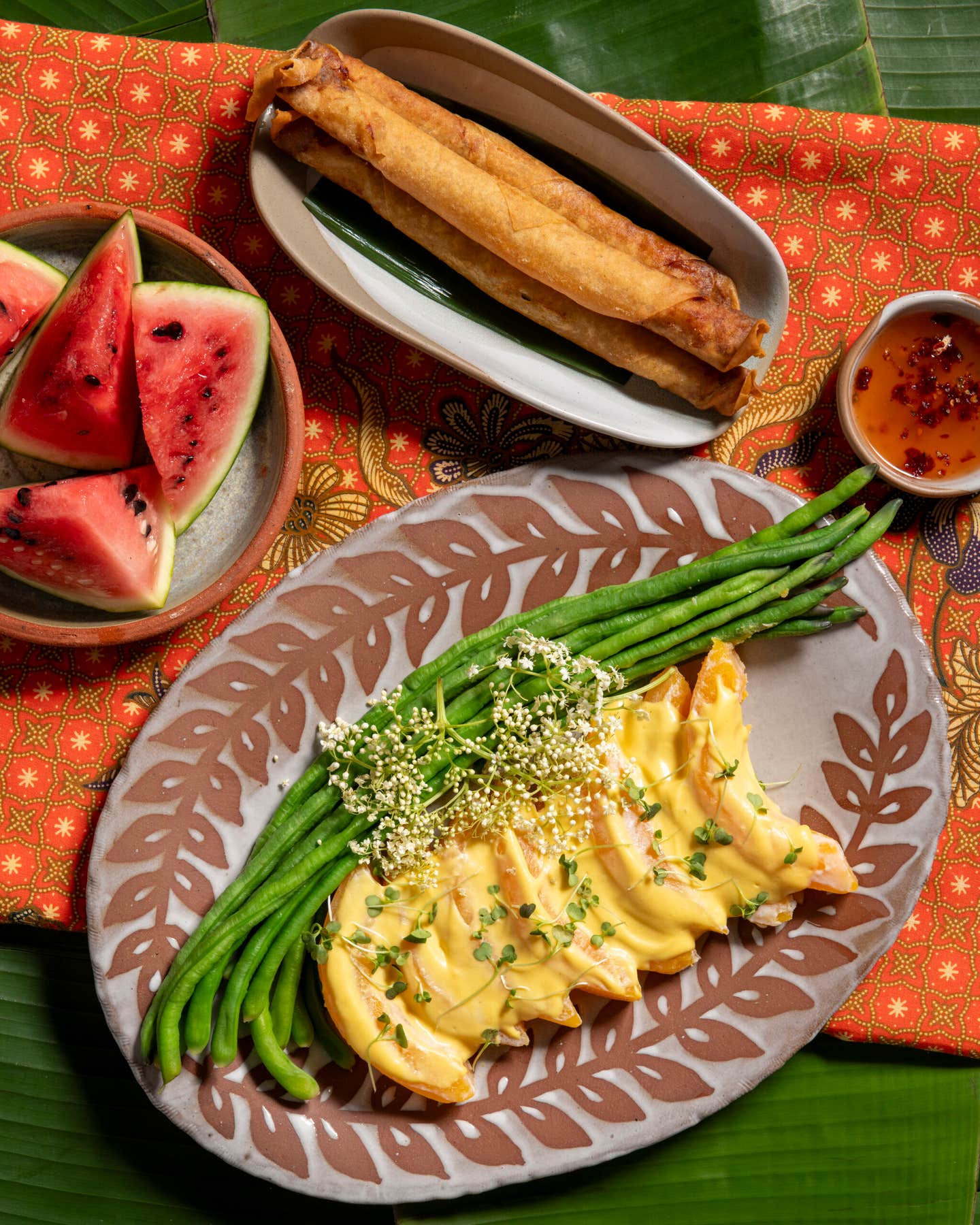
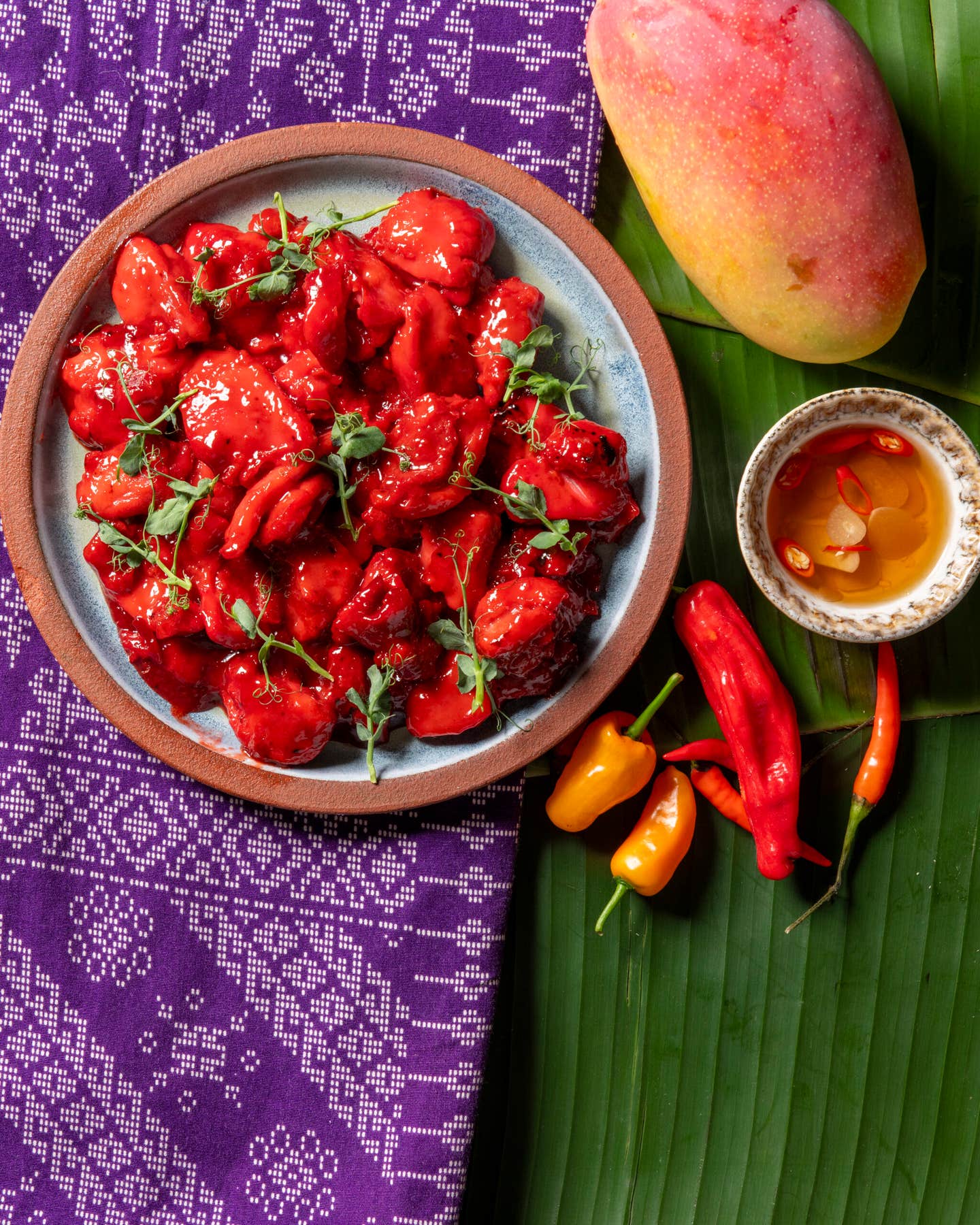
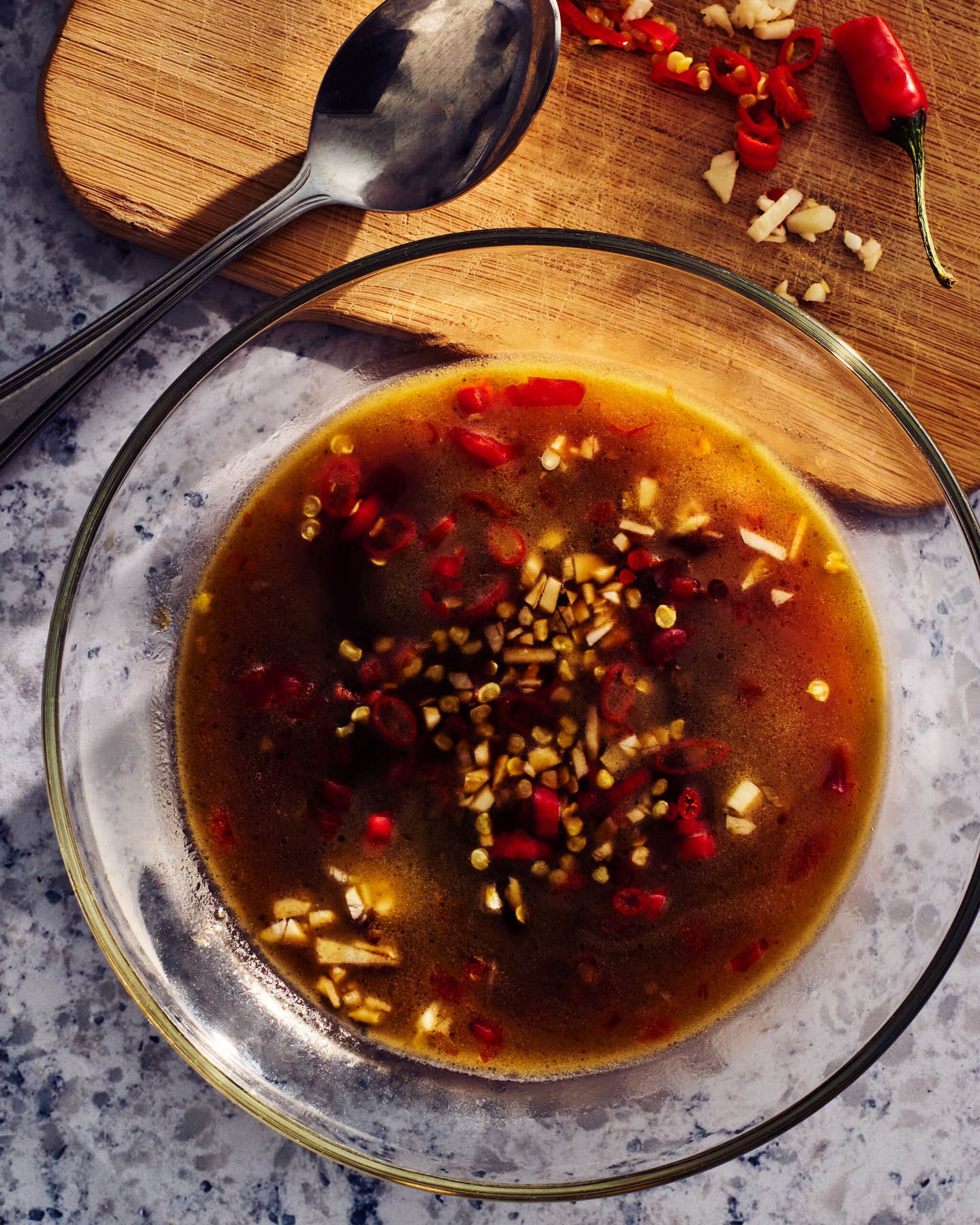
Keep Reading
Continue to Next Story










